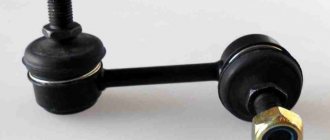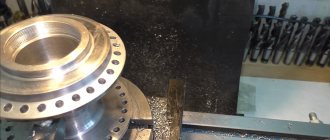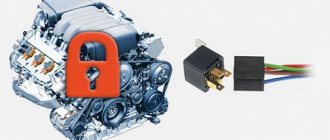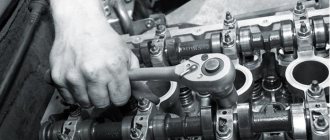In the designs of modern independent suspensions, along with a spring or air spring, a torsion bar (torsion - torsion, translated from French) can also be used as the main elastic element. Torsion bar suspension provides the car with a number of advantages, the main ones being high smoothness and compactness of the suspension. However, its significant disadvantages in the form of worse vehicle handling and rolliness do not allow the use of torsion bars in the bulk of modern passenger cars.
Torsion bar suspension - what is it?
The torsion bar is a shaft made of special spring steel, thermally treated. The alloy is subject to very stringent requirements. It must withstand prolonged loads without losing its original properties. The reliability and durability of the suspension as a whole depends on this. To reduce the negative impact of the external environment, the torsion bar is coated with an anti-corrosion compound and paint. The shafts that are coated with a rubberized compound are most protected from rust.
Popular brands:
Acura RSX, Citroen C5, Skoda Yeti
When a car overcomes uneven surfaces, the torsion bars work to twist in one direction. Depending on the design features they are:
- round;
- square;
- rectangular;
- assembled from several layers of metal.
The ends of the torsion bar are rigidly attached to:
- support arm;
- car body or frame (depending on the design).
Fixation occurs through slots. Fastening to the body can be realized using a profile other than round. For normal suspension operation, the rotation axis of the lever and the torsion bar axis must lie on the same line.
Torsional resistance is calculated so that the torsion bar supports the weight of the car, but at the same time allows the arm to move, providing an elastic connection between the wheels and the body. The stiffness of the suspension is affected by the shape, elasticity of the alloy, length and other performance characteristics of the torsion bar.
Disadvantages of torsion bars
- Oversteer. Almost all cars that have this suspension are prone to this. The driver must be especially careful when turning, because at this moment the vehicle may simply turn in the other direction. On ZAZ cars at low speeds, this problem becomes especially noticeable.
- The processing and production technology of torsion bars are quite complex processes in themselves. But otherwise, manufacturers cannot provide the required level of material elasticity and high strength. It cannot be done without special procedures to harden the surface, otherwise the metal will not be resistant to cracks appearing on the surface. Plastic deposits are also used. But even this does not stop those who use torsion bars to provide a higher level of comfort while moving in a wide variety of terrain.
- There are needle bearings where the arms are attached to the ends of the torsion beam. This system has a somewhat limited mileage resource. Through cracks in gaskets and seals, dirt, water and dust enter the bearings, which is why the bearings themselves fail faster. At the same time, driving intensity and style do not play a special role in this. Much more important is the impact of aggressive environments plus the aging of the rubber material.
Operating principle of air brakes Brake fluids
But, thanks to the high level of modern service, the problem is easy to solve by changing only the bearings or seals. Sometimes repairs are needed, replacing the torsion beam, but this is only in the worst case scenario.
Design and principle of operation
The figure below shows a torsion bar suspension, the principle of which is to protect the car body from excessive loads transmitted from the wheels by damping them with a spring shaft. As the car overcomes uneven road surfaces, the torsion bar twists, ensuring maximum smoothness. Upon completion of moving through the obstacle, the torsion bar returns to its original position.
The load is evenly distributed throughout the mechanism. According to the principle of operation, it is similar to a spring - but at the same time, the torsion bar demonstrates better efficiency.
The torsion bar suspension design assumes the constant presence of torsional stress on the elastic shaft during the action of lifting and lowering forces on the wheel. Therefore, the absence of deformation changes in the torsion bar is the main requirement for the product.
Where are they used today?
In recent years, torsion bar suspensions have become increasingly popular. As we already mentioned, in most cases they are installed on trucks and SUVs. But gradually the vector is shifting towards passenger cars.
Thus, torsion bars are installed on cars of the SMA, Lifan and Samand brands. In addition, torsion bar suspension is found on Peugeot 405, Citroen Xsara, Peugeot 405, Peugeot Partner, Citroen Xsara, Citroen AX, Citroen Berlingo, Peugeot 306, Peugeot 206, Citroen Xsara Picasso and a number of other models. Moreover, every year more and more new car brands join this group.
Types of pendants
There are 2 options for the location of torsion bars:
- transverse;
- longitudinally
The transverse arrangement of the torsion shaft has found its application in passenger vehicles. Typically, this type of suspension is used in rear-wheel drive vehicles. Its peculiarity is the placement of shafts along the car body.
Longitudinal torsion bars are used on large, heavy trucks. There have been attempts to use them in passenger vehicles, but this practice has not become widespread.
Currently, the automotive industry uses suspensions of 3 main designs:
- The front is independent using transverse shafts.
- The rear is independent with transverse torsion bars.
- Semi-independent rear.
Features of the torsion system
Using torsion bars, it is quite difficult to obtain an independent suspension system that would fully provide the required level of comfort.
Partly, it is for this reason that the parts are not yet widely used. But, if the torsion bar structure is still present, the system becomes quite free. Rotating shock-absorbing arms at the end of the beam will achieve better results. Thanks to this solution, the user can get a smoother ride while driving and independence of the wheels. This suspension will be a particularly effective solution on large cars, where it will constantly experience quite serious loads.
Front independent
The front independent torsion bar suspension includes the following elements:
- Longitudinal torsion bar. Provides high smoothness.
- Lever arm. Transmits force and causes twisting of the torsion bar.
- Shock absorber. Serves to dampen vibrations that occur in the vehicle's chassis.
- Anti-roll bar. Minimizes car body roll while driving. Improves car handling.
Front independent torsion bar suspension is used on heavy SUVs. This frees up space for powerful wheel drive.
History of suspensions in armored vehicles
Due to their special properties, torsion bars have been actively used in the past and are still used in armored vehicles.
They are made in two main types - hollow or solid shaft. A different design of torsion bar suspensions is not used in the production of armored vehicles.
The torsion bars are connected to the rest of the body components using special heads having slots of various profiles - triangle, rectangle or trapezoid.
For example, in the well-known Panther tank, the connection was made using a unique wedge-shaped bolt and heads with flats.
The main task of the developers of armored vehicles was the desire to achieve maximum strength. And they did this by increasing the diameter of the torsion bar head. At the same time, the unusual ease of installation is due to the presence of a special thread at the end.
In most cases, torsion bars for armored vehicles are made from reliable silicon or chromium steels.
In addition, nickel, vanadium, molybdenum and a number of other elements are necessarily added to the alloy composition.
To achieve maximum stability, chromium steels undergo high-temperature treatment (the maximum level of hardening temperatures sometimes reaches 800-850 degrees Celsius).
Another important point is increasing the dynamic properties of the car. This was achieved through coercion - the operation of twisting a hot torsion bar above the limit of its maximum elasticity and maintaining it in this state for a certain period of time.
As a result, torsion bars are able to withstand enormous workloads. This technique is actively used in the production of T-72 tanks, where captivity is performed twice.
The history of torsion bar suspension for armored vehicles dates back to 1940, when the command was given to optimize the T-34 tank. Already in 1941, the first tank models had a torsion bar suspension.
Thanks to this innovation, it became possible to use a larger volume of fuel (up to 750 liters) and increase the volume of the fighting compartment. Later, due to the war, optimization work had to be postponed for a while.
At one time, British craftsmen distinguished themselves by installing special hydraulic shock absorbers at the same time as springs. This innovation made it possible to minimize longitudinal vibrations of the body and improve the smoothness of the ride.
Rear independent
The transverse torsion bars of the rear suspension are installed in tandem with the trailing arms. An example of the design is shown in the image below.
An interesting example of a car with transverse torsion shafts and trailing arms is the Renault 16. The car has a different wheelbase on the right and left. The distance between the front and rear wheels on the right and left differs by several centimeters. The reason for this engineering solution is the sequential arrangement of the shafts one after the other. This slightly worsened the car's handling, but made it possible to increase the luggage compartment.
Without problems from the 20th to the 21st century
A little history. As we said at the beginning of the article, this type of pendants did not appear yesterday. More precisely, in the 30s of the twentieth century, and the first car with a similar design was the legendary Volkswagen Beetle. The successful engineering solution was noticed and adopted by Ferdinand Porsche in the same years.
Then, during the Second World War, torsion bars turned out to be indispensable in armored vehicles, and such suspension was used in both Soviet and German vehicles.
In the post-war years, similar systems became a real hit - they were and remain in service with almost all major automakers in the world.
Semi-independent rear
This type of suspension is based on a torsion beam, which has a U-shape. The trailing arms are located one on each side. The beam connects them together. The levers are attached with one side to the body, and the other to the wheel hub.
The beam resists bending well. At the same time, its shape does not prevent it from curling at all. The wheels may move slightly in the vertical plane relative to each other. The location of the torsion beam can be seen in the figure below.
Semi-independent suspension is used in budget cars with front-wheel drive. This is due to the simplicity of the design and low price of such machines.
Conclusion
Manufacturers around the world are working hard to improve torsion bar suspensions and reduce their production costs.
Modern equipment and unique computer programs are actively involved in the creation process. According to some experts, in the coming years, torsion bar suspension will be able to catch up with the popularity of its competitors.
But at present, most manufacturers are not yet committing to the mass introduction of torsion bars. We have already discussed the reasons for this decision above.
But in any case, there is hope that over time this trend will change, because torsion bar suspension is truly a unique development that requires special attention.
Pros and cons of using torsion bars
Torsion bar suspension has its advantages and disadvantages. The advantages of torsion bar suspension are:
- smooth running of the car;
- the ability to adjust the height, making it easy to change the ground clearance;
- compactness and simplicity;
- good maintainability;
- less load on wheel bearings;
- reliability.
The disadvantages of torsion bar suspension are:
- a large dependence of suspension stiffness on the quality of torsion bars;
- the complexity of manufacturing elastic shafts;
- Driving a car is difficult - turning is too easy.
Advantages and disadvantages
An undeniable advantage of a torsion bar suspension is the compactness of the system. Due to the fact that it has small dimensions, passenger car manufacturers can make a larger trunk or increase the interior. Cars with a spacious interior are purchased much more often.
The second advantage is that you can independently adjust the hardness or softness of the torsion bar. This parameter directly depends on the length of the torsion bar. Each driver can make it softer or harder independently.
The third advantage is that on cars on which such a suspension is installed, you can independently adjust the ground clearance. Thanks to this, you can independently make the car more obedient on the road and easier to drive.
There is also a fourth advantage - simplicity of design and inexpensive maintenance. This is an undeniable advantage over spring suspension. In addition, the torsion bar suspension is lightweight, so the vehicle's fuel consumption is reduced.
Despite the large number of advantages, this system also has disadvantages. Due to the fact that the system has a certain operating principle, additional vibrations are transmitted to the body, which are felt in the back seat. Therefore, it is impossible to achieve complete sound insulation on a car with this system. Based on this, we can conclude that the first and main disadvantage is vibration during movement.
The second disadvantage is that the operating principle of the torsion bar exposes it to self-destruction, as a result of which this part will have to be replaced.
The last disadvantage is that torsion bars can be more expensive to maintain. It all depends directly on the design of the machine. The fact is that some manufacturers install a torsion bar where it is impossible to get it without dismantling other devices. But there are also systems where everything can be replaced without difficulty.
car suspension on double trailing arms
This suspension has two trailing arms on each side. As a rule, such a suspension was used on the front axle of relatively low-speed rear-engine cars - typical examples of its use are the Volkswagen Beetle and the first generations of the Volkswagen Transporter, early models of Porsche sports cars, as well as the S-3D and Zaporozhets sidecars.
All of them had essentially a common design (the so-called “Porsche system”, in honor of the inventor) - transverse torsion shafts located one above the other were used as elastic elements, connecting a pair of levers, and the torsion bars were enclosed in pipes that formed the cross member of the suspension (in later models “Zaporozhets”, in addition to torsion bars, cylindrical coil springs located around the shock absorbers were also used as additional elastic elements).
Volkswagen Beetle
The main advantage of such a suspension is its greater compactness in the longitudinal and vertical directions. In addition, the suspension cross member is located far ahead of the axis of the front wheels, making it possible to move the cabin forward far forward, placing the legs of the driver and front passenger between the arches of the front wheels, which made it possible to significantly reduce the length of the rear-engined car. At the same time, however, the trunk located in front turned out to be very modest in volume, precisely because of the suspension cross member placed far forward.
From the point of view of kinematics, this suspension is imperfect: it undergoes, although smaller compared to single trailing arms, but still significant changes in the wheelbase during rebound and compression strokes, and there is also a strong change in wheel camber during body roll. It should be added that the levers in it must absorb large bending and torsional loads from both vertical and lateral forces, which makes them quite massive.











